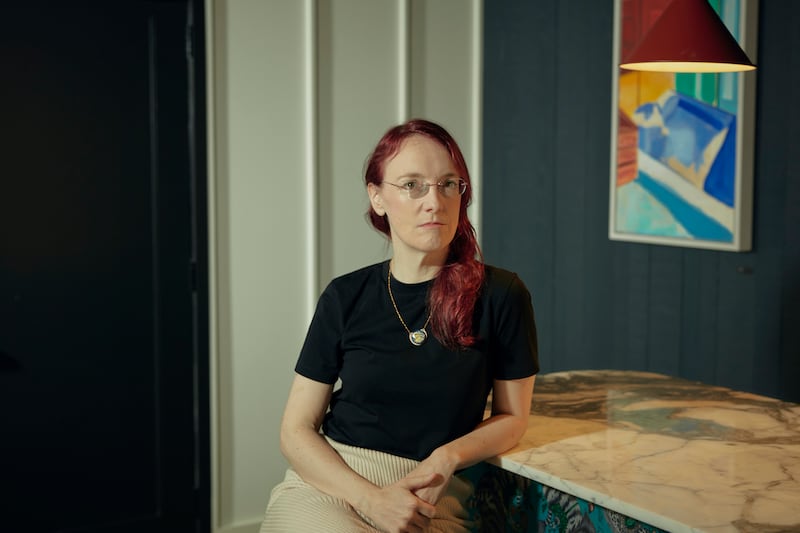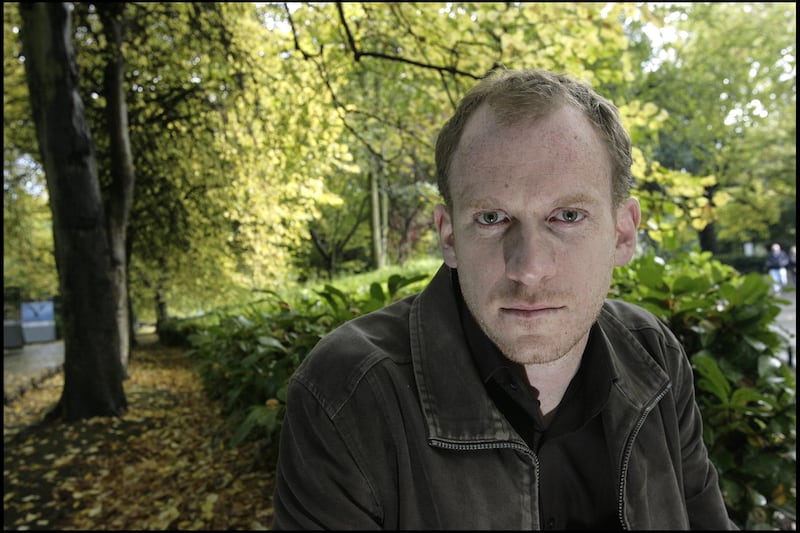These days the Irish literary journal scene appears to be flourishing; it’s the strongest it’s been in decades. Who knows why? “I don’t have a brilliant answer, to be honest” but “it’s not happenstance”, says Brendan Barrington, editor of The Dublin Review.
Liam Harrison, Tolka co-editor (and creative writing lecturer in Bristol), reckons it’s “a cocktail of factors” including “the ingenuity of many contemporary Irish writers (such as Eimear McBride, Emma Dabiri, Mark O’Connell, Anna Burns) who also act as touchstones for new writers, the financial support of the Arts Council (which encourages best practice rather than minimum standards, when it comes to paying writers and artists), the hard graft that writers and editors put in (often alongside other jobs and responsibilities) and a collaborative spirit to share knowledge and help each other out.”

For novelist Lisa McInerney, editor of The Stinging Fly since 2022, it’s become “a sort of self-perpetuating system now. More literary journals mean a writing community confident of being published and finding readers and a more confident writing community means a demand for literary journals with a strong identity and a commitment to excellence. The other thing that Ireland is currently doing very well is creating and sustaining robust funding models so these independent arts initiatives have the support to get off the ground. All leading to a healthy cultural scene, which benefits the country as a whole.”
Barrington, too, credits Arts Council support for thriving. “They got behind the Dublin Review (DR) from the very start, and that was absolutely essential for us. I think we sometimes take for granted, but shouldn’t, that we have an Arts Council that makes a really serious investment in the literary arts as well as all the other arts every year. DR couldn’t exist without Arts Council support. I know a number of other editors, publishers, would say the same.”
In our readerly, writerly country, getting published can be a holy grail. Literary journals have been a hotbed of writing excellence here for well over a decade and at The Dublin Review Conversations event during this week’s Dublin Book Festival, Barrington hosts three other journal editors – McInerney, Harrison and Eimear Ryan, author and Banshee co-editor – to discuss what they do.
Barrington wants to illuminate how they operate, and “dispel some myths about quote-unquote, how to get published.” He cautions: “There’s always a big market for anyone who claims to be able to tell you how to get published. To my mind, the whole how-to-get-published industry is completely bogus and disreputable.”
For years “we had amazing writers, we had great theatres and we even had an indigenous book publishing industry”, but despite the thriving literary culture, our literary periodicals were “strangely under-powered”. Barrington recalls moving here from New York in 1995, a year out of college, “I’d go into Books Upstairs and look around for the literary magazines.” Aside from The Stinging Fly, founded by Declan Meade and Aoife Kavanagh in 1997, “there were a couple, but they didn’t come out all that often. So [in 2000] I basically started the journal I wished existed.”
Discerning how many Irish journals exist is tricky and depend how you define a journal; plus some are infrequent or go into hiatus. They have different set-ups and specialities within fiction, essays, poetry. Writer Anne O’Leary’s Word Herding blog details up to 40 active journals, and poet Afric McGlinchey has an online directory of about 50 poetry and literary journals. As Barrington puts it, “There are several print literary journals that have high editorial standards, that pay contributors and that publish regularly. By this measure, the scene is stronger than it was 10 years ago, significantly stronger than it was 20 years ago and unrecognisable from 25 years ago. And that’s just better for everyone: for writers, for readers.”
An author who also writes for journals observes “there are lots of journals now and that’s really great for literary fiction and non-fiction in Ireland. Some English literary folk are really jealous of it. They get lots of submissions and have a really high standard. Journals are genuinely hard to get into. But it also raises people’s game.”
Journals can be important in a writer’s development and profile and sometimes a springboard: many fiction and non-fiction books “originated in something published in a journal, which becomes the kernel”. Also, “for a lot of writers a journal is the first place they’ll work with an editor,” says Barrington. “It may be their first exposure to a serious audience, where people are paying money for something that’s in print. It’s an important rite of passage for most writers, early in their careers and indeed at all stages of their careers.” Readers paying an annual journal subscription develop a relationship with it. “I think the intensity of the engagement is higher. It’s a piece in the jigsaw of a writing life and in a literary culture.”
It’s important in a country “bursting with writers” to have a vibrant book and periodical publishing sector. Journals are “not in competition in any sort of cut-throat, zero-sum sense. We’re all hopefully on a gradually rising tide together. It has to be good for standards, the existence of multiple reasonably well-resourced publications with proper editorial talent.” Plus, multiple journals with distinct editorial identities give writers options. “You don’t want to be both everyone’s first choice by default and the last chance saloon at the same time.”
Some journals change over time. “Even under one editor for 20-plus years, DR has evolved editorially. Other journals have multiple editors or a fairly regular turnover in the editor’s chair. We’re all in flux, even those of us that have been around a long time, and might appear fairly stable, I think you have to be always changing at least a little bit.... because the writers change, the culture changes, the world changes.
“Journals would be nothing without writers. They are at the heart of everything we do. Ireland, I think, has always been a remarkable wellspring of writing and writers.”

As editor, Barrington seeks to avoid writing that’s ephemeral, while also aiming to “reflect the moment”. Compiling last year’s anthology of DR non-fiction, he was struck by how well some topical essays held up. He mentions Kevin Barry’s decade-old The Skin of Anxiety, about online life. “The internet has changed profoundly in that time. But what Kevin was noticing then, about our relationship to the internet, online discourse and our devices, is something that has only become truer over time, rather than becoming obsolete. The best writing about the world as we find it, is noticing new things, responding to the moment, but also not losing sight of the bigger context and the bigger arc of history.” Barry’s piece appeared to be written “out of a sense of unease and also a curiosity. And that’s where I think most important writing comes from, some unease in the self or some unease in the culture, and/or some curiosity about something that seems important but doesn’t entirely make sense.”
There’s been a notable rise in creative non-fiction, essay writing, over the past decade. Whereas once “it was a real job to get people to write essays” as it wasn’t part of most Irish writers’ practice, “suddenly there was a really noticeable increase in the number of essays people were sending us, unsolicited.” He mentions the relatively new Tolka, with “a very, very strong non-fiction orientation. That is a genuine change. I think it’s absolutely brilliant. Back in 2000, a young, ambitious writer was more likely to be trying to get a play at the Abbey than writing essays. That’s very different today. Nothing against playwrights and the Abbey. It’s just a shift.” In turn, this is reflected in the publication of books of essays.
“I’d love to say journals looking for great non-fiction writing played a big part [in the growth of essays] but I actually don’t think that’s the case.” Theories about the shift towards essays include crediting social media and a “different relationship to the self and self-exposure. There’s probably something in that. The people to ask, really, are the writers, but when someone sends you a glittering personal essay, full of intense self-scrutiny, real thoughtfulness, beautiful sentences, I feel almost superstitious about asking where it came from. You just give thanks the writer saw fit to do it.”
Journals can involve a lot of work on tight budgets. “It’s never been easy to publish a successful journal.” Even a leading periodical like DR, published quarterly, operates with “three extremely part-time people”; less than one full-time equivalent. “I don’t read every word of everything”, but Barrington has developed “my own sifting method”. Others have different models, with multiple editors, reader panels, editorial committees.
DR is a tight ship, surviving on “a combination of sales to subscribers and bookshops and the Arts Council grant. And being very careful about costs.” Overheads are small, but “we’ve always tried to pay our contributors decently”. Circulation is mainly subscription-based, with over a quarter of subscribers outside Ireland. DR’s submissions and circulation both spiked during Covid-19. “The circulations of literary journals rarely get very big, but they can have a disproportionate influence on the shape of literary culture.”
Measuring reach and impact is difficult, says Barrington. “All you can do is firstly and most importantly, publish world-class work. Secondly, do everything you reasonably can to let the world know about it. That’s why we do this Conversations event and the amazing DR podcast, which is 100 per cent the work of Aingeala Flannery, who, in addition to being a brilliant writer is a superb podcaster and has brilliant conversations with our contributors.
“I’m very conscious we are fundamentally an Irish publication. Most of our contributors are Irish. Our profile outside Ireland is very small. But I think you can, within those realities, have very high standards.” His aim is for work of international calibre. “There’s no ambition to rival the global impact of the New Yorker. That’s just not even on the radar. But you want to put out something that’s so good, that if a subscriber gets the New Yorker and also gets The Dublin Review, you want them to have a similar feeling when it turns up.”
They may all be swamped with submissions after the event. “But getting zillions of submissions is just part of the deal.” Editors often advise, “please don’t send out your work until you feel certain you couldn’t possibly make it any better. And sometimes we have reason to suspect that isn’t the case.”
In DR he looks for writing that “goes deep into things. I’m not interested in a sort of glittering, lyrical skating across the surface”. He doesn’t like how some non-fiction lyric essays are “all about pretty language and glancing associations and connections, but with rare and brilliant exceptions, they tend not to go deep”; excavatory non-fiction is “the sort of writing that excites me and that I want others to read. Sometimes it starts with something very personal, sometimes with something very public, a political or cultural phenomenon the writer is interested in. But almost always, there ends up being some kind of bridge between personal and public in the course of the excavation.”
He’s hesitant to talk about the successful trajectory of DR writers. “But I’m proud we published Sally Rooney’s first-ever piece of print prose. I’m proud we published Mark O’Connell’s first piece of cultural criticism-cum-reportage. In his early DR essays, I think you can see already fully formed the sort of mind that has gone on to write his books. I’m definitely taking zero credit for their success, or other writers we published early career. It’s just terrific to see writers that you thought were brilliant going on and being recognised as brilliant by the world.”
You need “a healthy enough confidence in your own judgment to edit a literary journal. You want to feel what you’re doing connects in important ways with bigger readerships and plays a part in writers’ careers. I absolutely love it. What I love most is working with writers on pieces, helping it become the best thing it can be. And it’s different every time, because every writer is different, every piece is different and the editorial process is never the same twice. That is for me the most rewarding and exciting part of the job. That’s why I’m still doing it.”
A relatively robust, earlier periodical culture, with publications like The Bell and the Dublin Magazine, gradually faded. “Culturally, the journals of the mid-20th century were fighting a good fight against an incredibly narrow, repressive culture. I don’t think the current journals can necessarily make an equivalent claim, because the world has changed. There’s no objective way of measuring it, but by my lights, it’s stronger and more interesting now, in literary terms, in editorial standards and in some sort of representation of what’s going on in Irish literature.”
Dublin Review Conversations: The Edit Suite is on November 10th at 6pm at the Glass Mask Theatre in Bestseller Café, as part of Dublin Book Festival, with 80 events in Dublin, November 8-12. dublinbookfestival.com/


















